After the plug is pulled: the fall & rise of Fortuna ND
Like many towns in the Great Plains, Fortuna was a creation of the railroad. Their PR campaign in the early 1900’s promised that prosperity could be found along the tracks. Mostly Norwegians bought into the idea and came to this remote corner of North Dakota to grow drought-tolerant durum wheat, raise beef cattle and mine a bit of low quality lignite coal. Being a fairly stubborn lot by nature, these folks toughed it out through brutally cold winters and summers without rain in isolation for forty years. Then the Air Force showed up to inject government money into the local economy.
In addition to the work building and supporting the radar station, Airmen brought their families with them. The resulting demand for more services caused something of a boom in Fortuna. No longer just a grain elevator on a railroad spur, the town at one time boasted five churches, a school, gas station, post office, hardware store, a mercantile store, senior center, tavern and indoor curling lanes. According to the 1970 census there were more than 200 people living inside the city limits. And then the Air Force base closed.
Nobody seems to agree on exactly how many remain, but the current population in 2018 is somewhere around 25.
Just when things look really bad, it gets fracking better
A lot of small towns in North Dakota have simply faded away. If you’d like to learn more about the phenomenon, I highly recommend the site Ghosts of North Dakota. Fortuna was headed toward this fate of becoming just another collection of tumbledown buildings along a lonely highway. The merchants closed up, the churches dried up and eventually even the Feds tried to get out of town by shutting down the Post Office. But then two things happened to pull Fortuna back from the brink, at least for the moment.
In 2006, a very clever fellow with a very average name figured out that there was oil trapped in the shale layer below the Great Plains. Using the techniques of horizontal drilling and fracking, he showed it was possible to extract billions of dollars worth of oil and gas out from under North Dakota’s wheat fields. For the next ten years, the North Dakota/Montana border became America’s latest boomtown as speculators and job seekers rushed in to cash in.
Williston, sixty miles to the south of Fortuna, quickly became the center of the boom, attracting massive investment and problems from the resulting uncontrolled growth as well. To Fortuna and other small towns in outlying areas, the oil boom meant a new source of income for land owners and good paying jobs for anyone who wanted one. Thus the fortunes of Fortuna were buoyed for a while, up until 2015 when the OPEC boys dropped the price of their own oil making fracking not so profitable anymore.
That took some of the frenzy out of the boom, but oil continues to be a part of the economy of Divide County – though at a more methodical pace.
Unlikely Prophets of Fortuna’s Revival
Mike and Deborah were fortune hunters too. They came to Fortuna because Mike was in the gravel business; the economy had tanked in Tuscon but there were promises of plenty of oilfield work in North Dakota. Trouble was they came late in the game. After a couple of years the oil companies slowed down both their drilling and their payments to contractors. Now it was a shrinking market with too many bidders for every job – Tuscon all over again. The couple talked about getting out.
But then something strange and wonderful happened. Through a series of unlikely events, they wound up buying the old Fortuna elementary school, rebuilding and reshaping it into a condensed version of most of what was lost when downtown became ghost town. It seemed like a crazy idea that would never make it, but there it stands today, Fortuna’s Old School Center.
I’m a sucker for Mom & Pop community builders, and the story of Mike and Deb drew me to the place like Smoky Bear to a campfire. I spent the better part of a week in the RV park out back while I toured the area. This single building has most of the daily needs covered for Fortuna residents, visiting oil workers, roaming Canadians and even an itinerant philosopher like me. Want some worms? Got em. A tank of propane, beef jerky or roll of toilet paper? No problem. Game of pool? Shot of Jagermeister? Room for the night? Wash your socks? Maybe rent an office for a month? With the exception of the gas station and the church, the Old School Center is an entire small town business district under one roof.
This single building has most of the daily needs covered for Fortuna residents, visiting oil workers, roaming Canadians and even an itinerant philosopher like me. Want some worms? Got em. A tank of propane, beef jerky or roll of toilet paper? No problem. Game of pool? Shot of Jagermeister? Room for the night? Wash your socks? Maybe rent an office for a month? With the exception of the gas station and the church, the Old School Center is an entire small town business district under one roof.
Teacher’s Lounge
The bar is called the Teacher’s Lounge, and it is now pretty much the beating heart of Fortuna, North Dakota. I figured in a town this small, all you had to do was sit at the bar for a while and you’d soon know everyone in town, and hear a lot of their stories. I did, and I now I do. 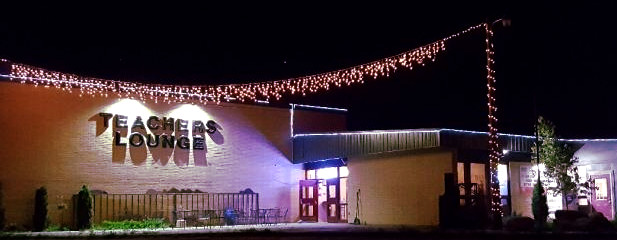
I asked farmers what they thought about the oil people. I talked to Canadians about the border security. I met the mayor, who used to run the last business to close up downtown, the Border Tavern. I chatted about the world of oil exploration with a well owner and taught a few of his young roughnecks some hard lessons about the consumption of alcoholic spirits. I found out why Paige tends bar in Fortuna instead of working as a nurse in Crosby.
Soon I began to feel like a local. Certainly not a real local, because I hadn’t endured a single thirty below North Dakota winter. But I was there when a farmer left a fresh beer on the bar to go assist rounding up his neighbor’s escaped cows. I helped celebrate a 40th wedding anniversary. I discussed the challenges of keeping 100 year old infrastructure running with only a handful of residents on the tax roles. The people of Fortuna accepted me at face value, and I loved them for it. It is a place so far from anywhere you can’t even see the middle of nowhere, but you can still see Canada. Go there anyway. I promise you won’t be disappointed.
Postscript: while researching supporting material for this piece I came across this map of the travels of William Least Heat Moon, author of one the books in my camper library, Blue Highways. It’s been years since I last read it, but it seems I’ve been unknowingly retracing his route through this area. He even made a reference to Fortuna in the book. How could I have missed that? Maybe I didn’t; perhaps it was a dormant seed in my subconscious, awaiting the day when I would take this journey to spring to life.
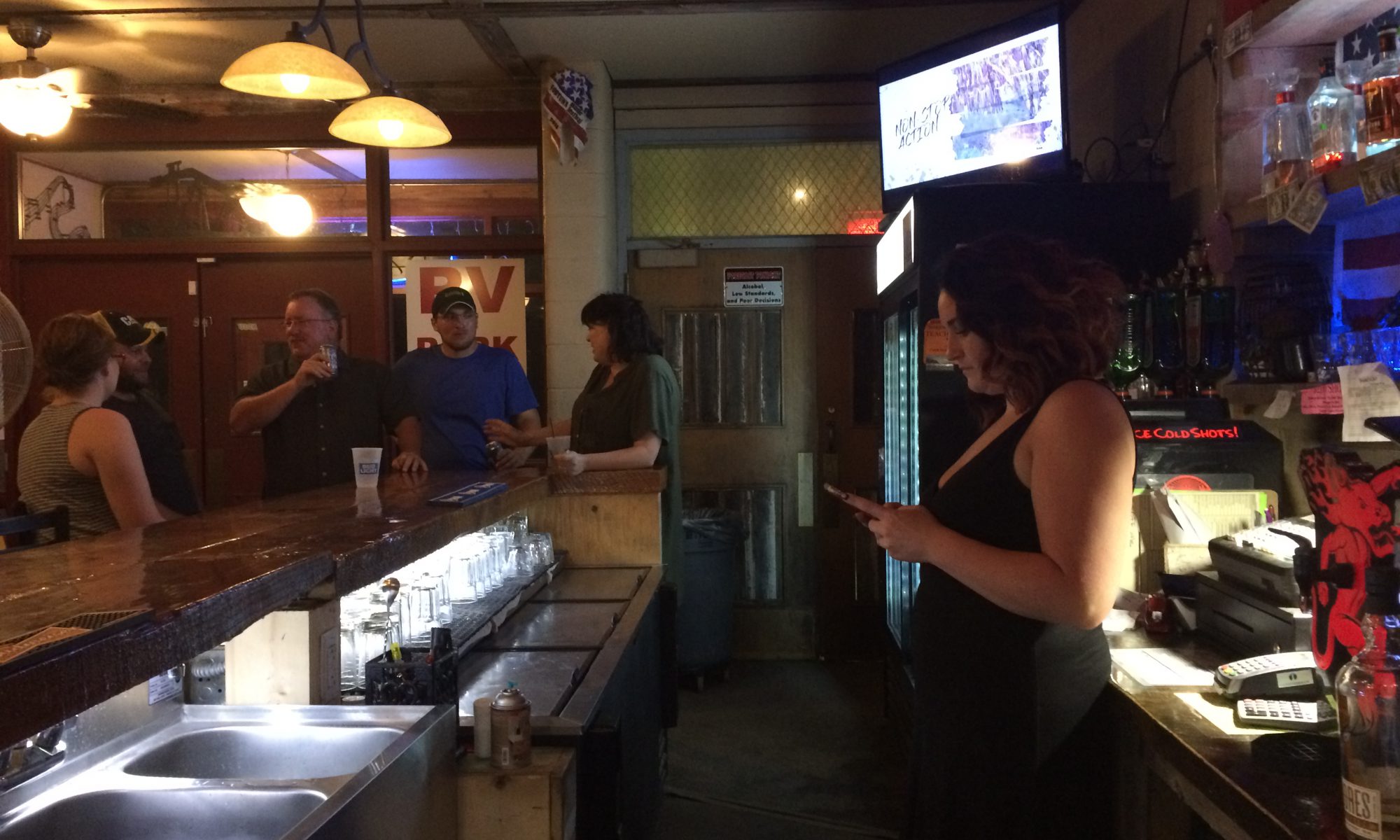
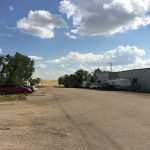
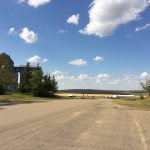
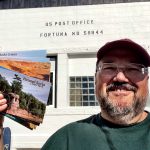
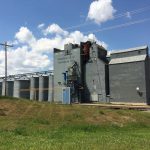
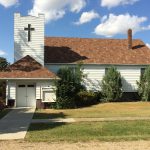
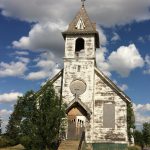
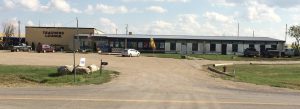
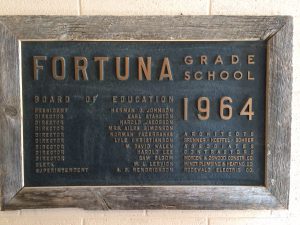
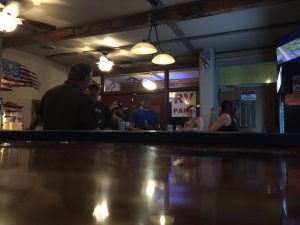
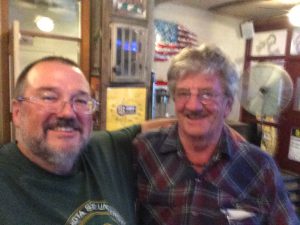
Thank you for this online post! I have never been there but if my passage brings me to ND it`ll bring me to Fortuna!
It seems that of the many posts from my 2018 adventure, the pair about Fortuna, ND have garnered the most outside interest. That makes me smile.
Here are a few more tidbits on the place, first a happy piece from earlier in the year I visited, all about my friend Gary the mayor: https://www.kfyrtv.com/content/news/Exceptionally-Efficient-Government-480726931.html
And this recent bit of sadder news, recording the fate of Fortuna’s grain elevator. It was damaged in a storm a month prior to my visit later that summer. New Century Ag, the owners of the facility, determined the elevator wasn’t worth repairing. This August, what was once the tallest wooden structure in North Dakota was demolished. https://www.journaltrib.com/wp-content/uploads/images/2019-08-21/1p1.jpg